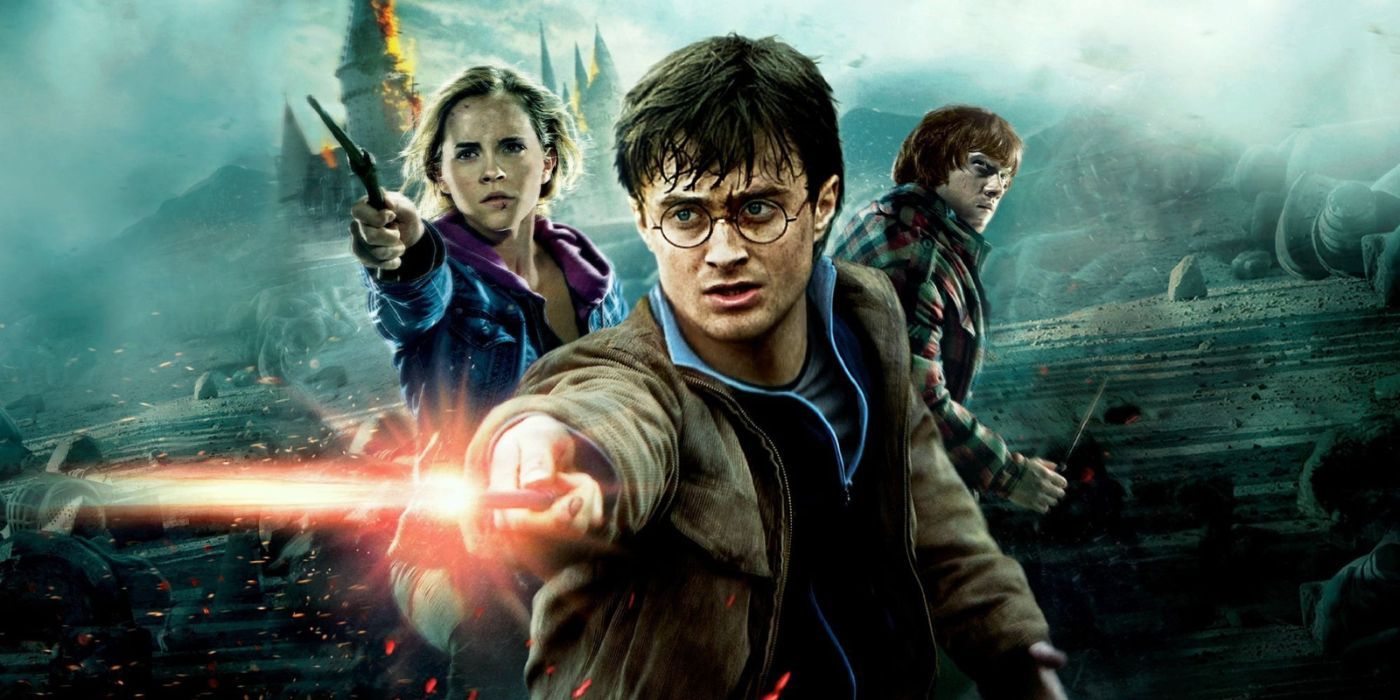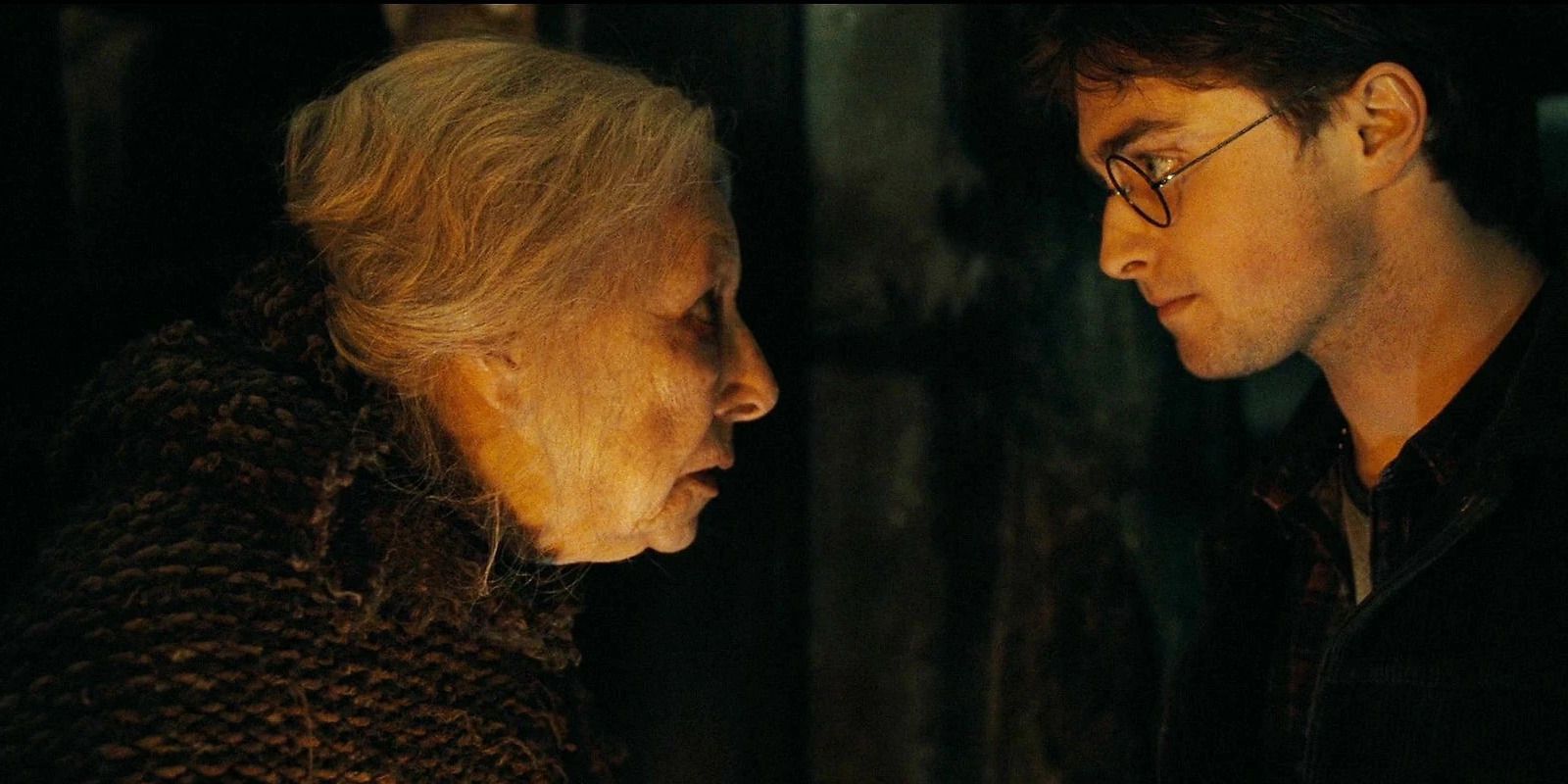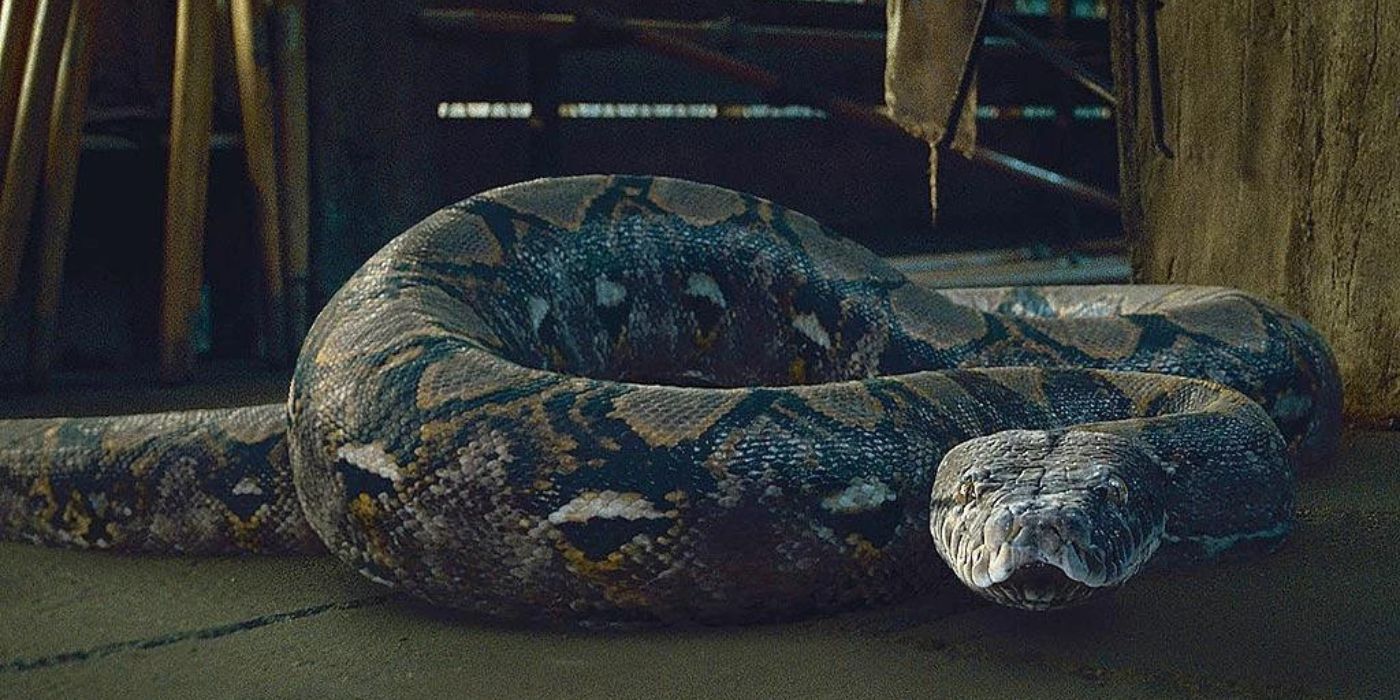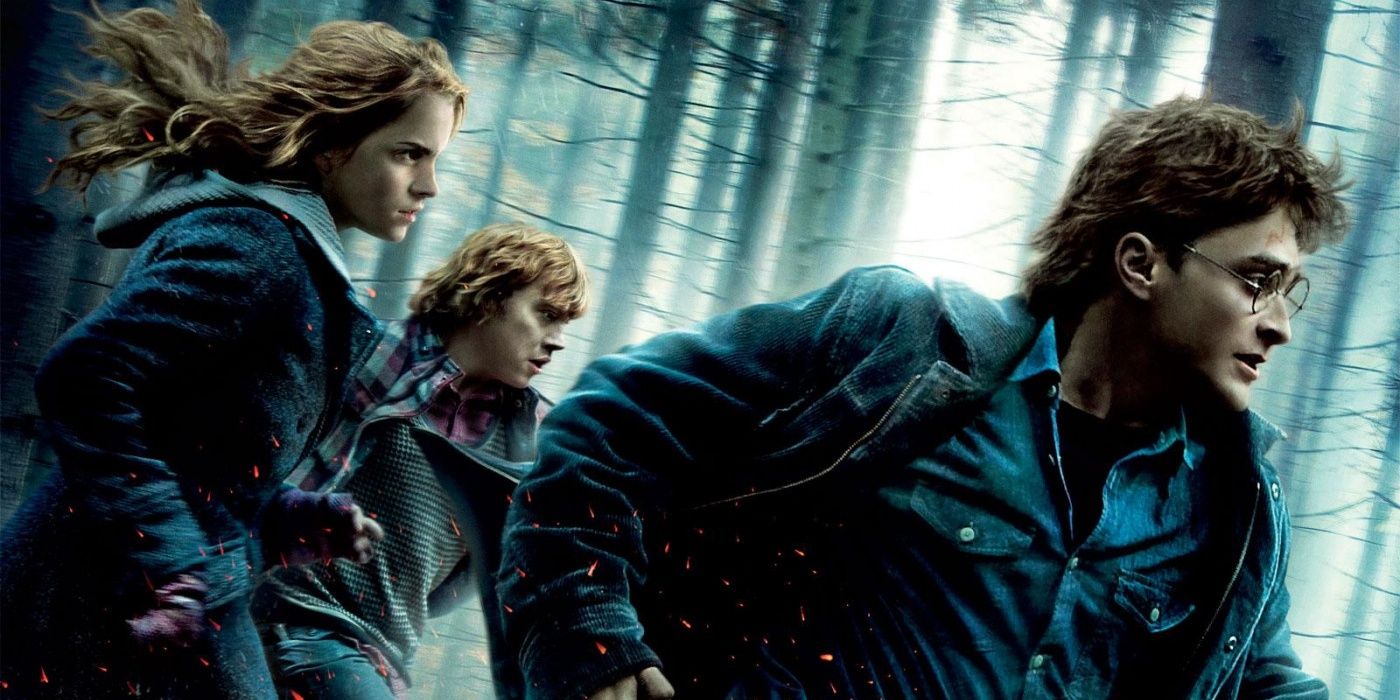The Big Picture
- Harry Potter and the Deathly Hallows Part 1 is actually a psychological thriller that introduces a constant sense of foreboding throughout the film.
- Director David Yates effectively builds suspense through dim lighting and fast-paced camera movements, particularly in the Godric's Hollow scene where Harry and Hermione meet Bathilda Bagshot, who actually turns out to be Voldemort's snake, Nagini.
- The absence of Hogwarts and the trio's growing isolation intensifies the feeling of hopelessness, making it the scariest film in the franchise.
There are many frightening moments throughout the Harry Potter series, involving enormous, human-eating spiders, fifty-foot long snakes, faceless soul-sucking demons, and death defying tournaments that cause you to lose your mind. But as scary as Harry Potter can be sometimes, it is also equally endearing and inspirational, and for the first six films, Harry (Daniel Radcliffe), Ron (Rupert Grint) and Hermione (Emma Watson) always managed to miraculously triumph over any terrifying threat. However, that seemingly undying hope significantly dwindles when we arrive at Harry Potter and the Deathly Hallows Part 1. There are no enormous hungry spiders or Basilisks in this film, no bewitched mazes or fire-breathing dragons, but there is, however, a constant sense of foreboding that pulses throughout the film’s entirety. Harry Potter and the Deathly Hallows Part 1 is a psychological thriller, and seeing Harry, Ron, and Hermione fall victim to hopelessness is vastly more terrifying than any human-eating creature. Deathly Hallows Part 1 is full of death, violence, and torture, but the scariest scene is when a discouraged and desperate Harry and Hermione travel to Harry’s birthplace — Godric’s Hollow, and they meet a creepy old lady by the name of Bathilda Bagshot (Hazel Douglas).
Director David Yates fuels the film’s budding sense of dread by dimming the camera lens and making everything look pale and gloomy. Although each Harry Potter film has a different feel to it as a result of the directorial changes, Harry Potter and the Deathly Hallows Part 1 really does stand out as a separate film due to Yates’ dulled camera lens and his fast-paced, disorienting camera movements that add to the film’s suspense. But even more than that is the fact that Deathly Hallows Part 1 depicts Harry, Ron, and Hermione’s growing isolation from everything. The complete absence of Hogwarts in this film means there are none of those comforting, homey vibes we get whenever the castle appears on-screen. It is merely Harry, Ron, and Hermione against the world since Voldemort (Ralph Fiennes) has taken over pretty much all of it, and the pressure of their isolation sees the Golden Trio fight among themselves, too.
The Bathilda Bagshot Scene Is the Scariest Moment in 'Harry Potter'
The trio's scarce successes are marred by the seemingly endless roadblocks they encounter. Slowly but surely the torment of Voldemort’s Horcruxes snuffs out their hope, and you wonder if they will even succeed at all. Eventually, Ron becomes fed up, and after a heartbreaking fight, he abandons Harry and Hermione. With nothing more to go on than their instincts and the scant supply of clues that Dumbledore (Michael Gambon) left behind, Harry and Hermione travel to Godric’s Hollow in search of the Sword of Godric Gryffindor, which is armed with the power to destroy Horcruxes. It is there that they find themselves being watched by an elderly woman whom Harry recognizes as Bathilda Bagshot, a famous historian in the Wizarding World. But she doesn’t look so good — in fact, she looks like a dead woman walking with ominous, sunken black eyes and drooping skin. As Harry and Hermione follow her, that sense of foreboding builds. Bathilda leads Harry and Hermione to her home, which in the Harry Potter and the Deathly Hallows book is described to smell like rotting meat. It is dark and dirty inside, and flies hang around as though the house is decaying.
Bathilda leads Harry upstairs in the near darkness. Up until this point, she hasn’t spoken a word, but once alone with Harry, she begins to speak in Parseltongue. Harry understands her, and he replies in the same tongue, but he doesn’t realize he’s doing this. In the book, Harry feels the scar on his forehead prickle and a menacing voice in his head say “hold him.” Shortly after, the true identity of Bathilda is revealed to be Voldemort’s snake, Nagini, and Harry watches horrified as Bathilda’s body transforms into the large snake. Here, we learn that the reason Bathilda’s home was decaying was because Voldemort had already killed Bathilda and used an Inferius charm upon her dead body in order to animate her and enable his snake to operate her body.
Bathilda's Transformation Into Nagini Leaves Harry and Hermione Feeling Hopeless
After Nagini reveals herself, she attacks Harry violently and tries to coil around him in order to hold him there and await Voldemort’s arrival. Harry tries to fight back. During the struggle, Nagini smashes through a wall, and she and Harry fall into a child’s nursery belonging to the house next door. The sight is equally bizarre and frightening — the lamp swings back and forth above them and the sudden brightness of the nursery is a stark contrast to the perpetual dimness of the rest of the film. Although the nursery is filled with children’s toys, it certainly doesn’t feel homey.
As Harry fights for his life, Hermione comes to the rescue, casting curses at Nagini. In a rapid sequence, Nagini launches herself at Harry and Hermione, opening her large mouth and revealing gruesome fangs, before Hermione casts one more curse and she and Harry Disapparate to safety. This entire scene occurs during the second half of Harry Potter and the Deathly Hallows Part 1, and even though Harry and Hermione escape, they are emotionally and physically defeated. At this point, the odds of beating Voldemort are very slim, and you find yourself sharing Harry and Hermione’s feelings of hopelessness.
The Absence of Hope in 'Harry Potter and the Deathly Hallows Part 1'
Ultimately, it is this absence of hope that makes all the difference in Harry Potter and the Deathly Hallows Part 1. Harry, Ron and Hermione are away from Hogwarts and their friends and family for almost all of the film. They are constantly on the run and for the most part, they have no idea what they are doing. It is a testament to David Yates’ directing skill for he was able to represent the Golden Trio’s despondency through the alienated and colorless environments they venture to and from. Although Ron returns to Harry and Hermione shortly after their terror at Godric’s Hollow, bringing a bit more spirit back to their lives, it isn’t until Harry Potter and the Deathly Hallows Part 2 that their hope finally rekindles.




